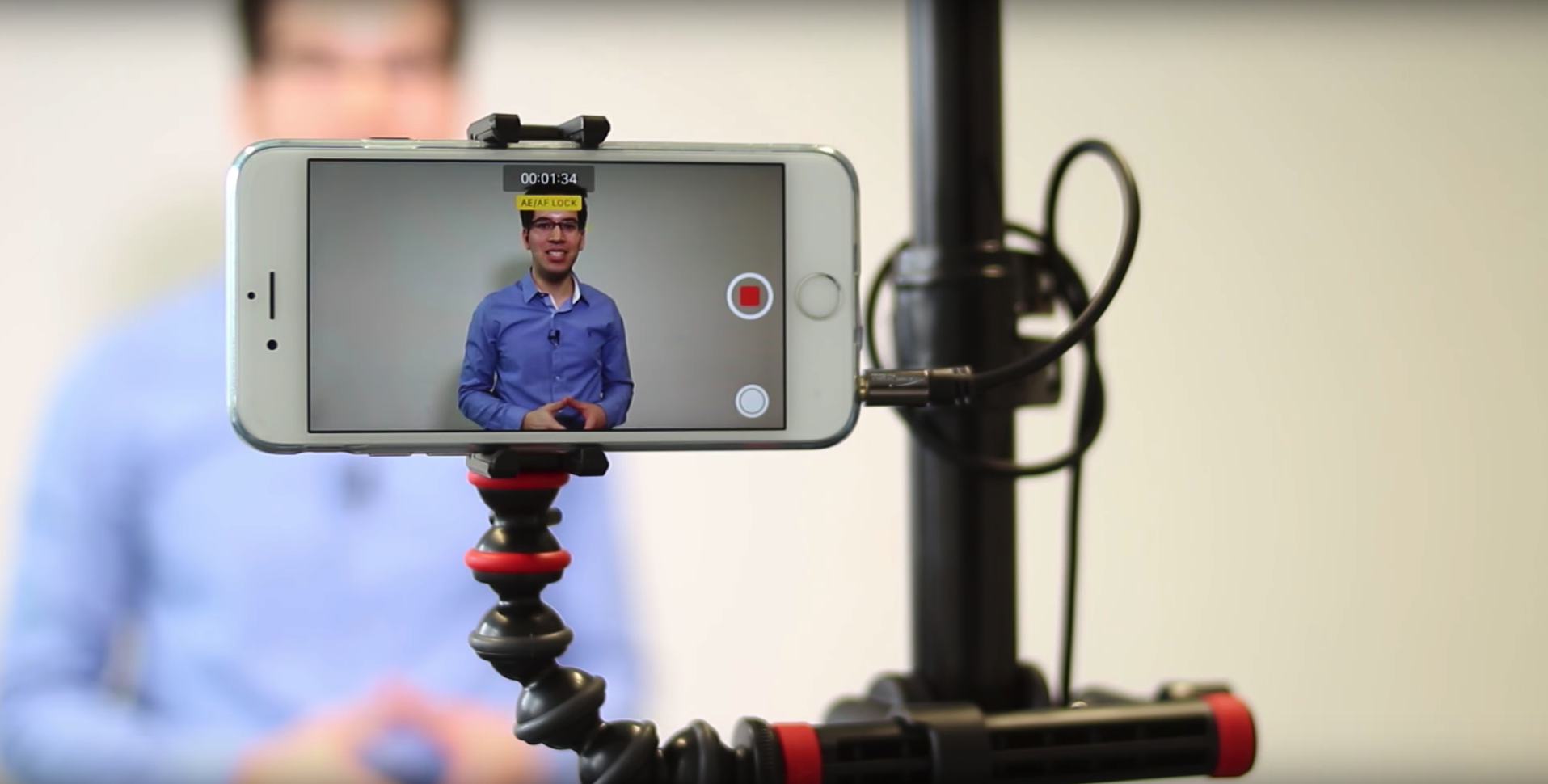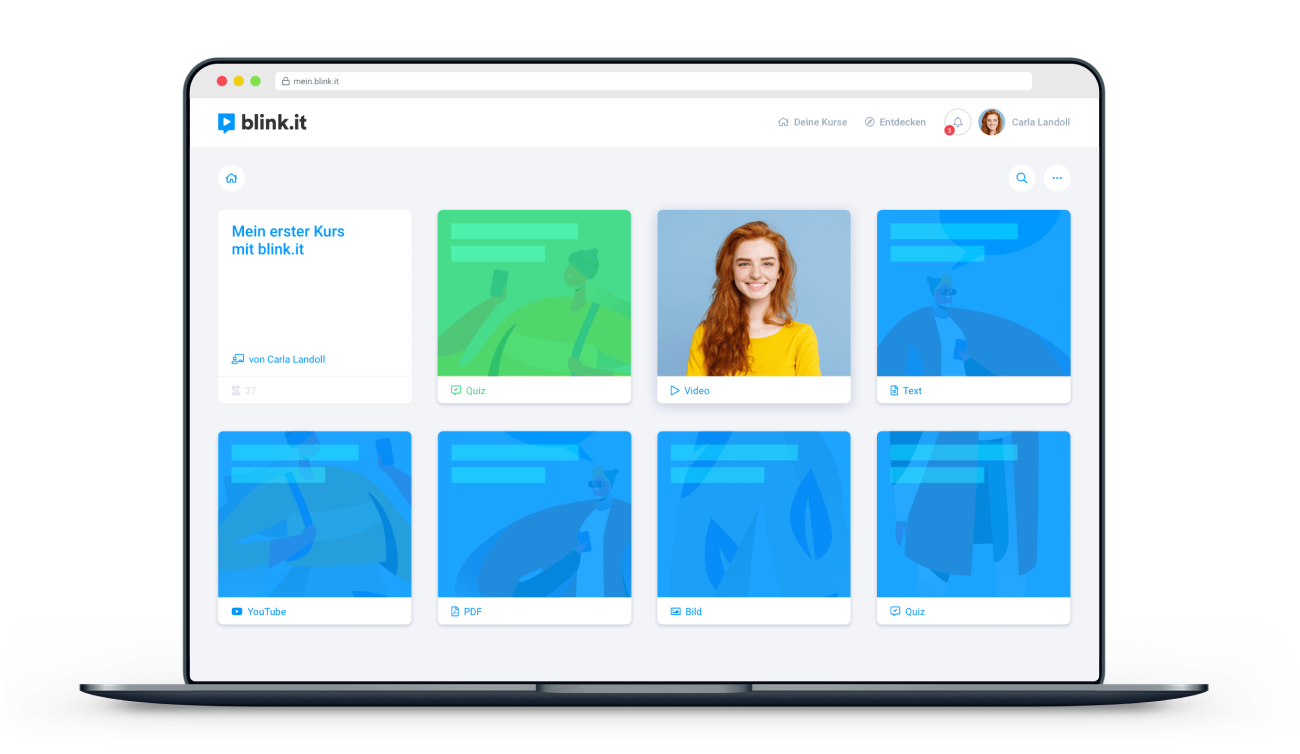You want to use your training content in an online course - but actually you don't have time to create everything from scratch? These 5 tips will help you fill your online course very quick and save valuable time!
First up: in this article you will find some software/app recommendations. We do not get any reward for these recommendations, but choose to recommend the tools from our own experience!
1. Digitize workshops and training sessions
Let's start right with the content that’s the biggest challenge for most trainers: How can you actually translate your "live" content into an online course? Often, tools can only do one or the other: Either create learning content, or schedule live sessions (Go2Webinar, for example). But we here at blink.it have a simple trick that works very well – for example:
Use a digital meeting provider such as Zoom. In the free version of Zoom, you can manage up to 100 participants, hold 40-minute group meetings, and record your meetings – which is very handy because you can also make the recordings available later in the course.
Simply include the link to the digital meeting room in a learning unit so that your participants can access it at the right moment. Of course, you could also send the link to the meeting by e-mail. However, directly embedded in the online course, your participants have all the information at a glance and nothing falls by the wayside. This makes it much easier and clearer for your participants (and for you) to access the video call at the right time.
2. Adapt materials that are not (yet) digital:
Maybe you use classic manuals, information sheets or outlines for your trainings. To offer these materials in the online course, you can usually digitize them easily with your smartphone:
There's a huge selection of scanner apps in the app store that let you turn all kinds of documents into images or PDFs right on your smartphone. Some apps even have a special mode for whiteboards to digitally save notes or diagrams.
You can see a selection of scanner apps here: The Best Mobile Scanning Apps – you’re bound to find one there.
 Use your smartphone to scan your training materials quick and easy.
Use your smartphone to scan your training materials quick and easy.
3. Materials in PDF or Word format
Do you already have your documents as PDFs or in Word document format? Great – you can directly embed these formats in actually all modern LMS or learning platforms or attach them as a download for your participants.
With Word materials (.doc/.docx), however, you should note that an Office program is required to open them. On the other hand, almost every device, whether laptop or smartphone, has a PDF reader. You should therefore also convert Word documents into PDFs.
Large PDFs, such as manuals with many pages and topics, should be divided into several learning units so as not to overwhelm your participants. To do this, you can split the PDFs using Adobe Reader or PDF2GO, for example – or, if you want to do it really quickly, simply take screenshots of the pages and use the images as individual learning units.
4. PowerPoint presentations
Do you have a PowerPoint presentation that you usualy present "live" at the beginning of your training? Or does a presentation accompany your whole training? Then use this presentation in the online course as well:
In modern learning systems like blink.it, you can easily upload PowerPoint presentations as learning units. The same applies here: If there are many slides with different topics, split up the content for the online course.
If the presentation also involves explanations from you, record your screen, for example with CAMTASIA or Screencastify, while you play the presentation. Camtasia is a great video editing program that also lets you edit or cut your recordings. Screencastify is a simple browser addon - our favorite!
Use a headset or the microphone of your laptop to record suitable "live explanations". Then upload the finished recording with audio commentary to your course – ideally divided into several short videos, each 2-5 minutes long.
5. Impulses, exercises and short explanations
Small impulses for exercises – or explanations for tasks – can be quickly and easily recorded as short videos. You don't need a big studio for this: your smartphone is enough. If you want even better quality, we recommend the smallest studio in the world – consisting of a tripod, cell phone holder, light and microphone.
With the world's smallest studio, you can easily create short videos for online courses using your smartphone.
Record your impulses and explanations as you would normally convey them to your participants in person. Remember, the videos don't have to be perfect! According to a study by TechSmith, what matters most in explainer videos is good audio and informative content.
As you can see, digitizing learning content for online courses isn't difficult at all. With a scanner app, a meeting tool like Zoom and blink.it as a platform, you can turn your training content into online courses in no time at all, even without face-to-face meetings!











